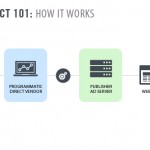How To Further Protect Your Computer
The digital age offers an abundance of advantages to consumers and businesses alike. However, the reliance on that kind of tech comes with its own downsides, downsides that are often counterintuitive. In order to keep your tech protected, you’re going to need these tips.

Power Surges
The major problem with computers in particular is that they can be extremely vulnerable. Nowhere is this more apparent than power surges. A power surge can not only interrupt your devices, but it can actually damage electronics. Computers in particular have many fragile components that can become fried when exposed to excess electricity. Worst of all, the average motherboard can be destroyed by a power surge. There are a few key ways that you can keep this from happening. For starters, you can use a UPS power supply to prevent interruptions outright. However, when and if they occur, you’ll also need to make sure that you’re using a surge protector in order to prevent the surge from reaching sensitive tech. In addition, computers have a greater need for power than many electronics, and that means that you’ll need to make sure that your connection is grounded in order to ensure that the electricity has room to breath, so to speak.
Cyber Security
In addition to protecting your hardware, you’ll also need to take care of your software. Interactions with the internet take up more and more your daily life, and that increases the likelihood of encountering malware or other cyber threats. Hackers have developed a number of tools and techniques with which to attack internet users in order to steal personal and financial information for the purposes of identity theft, and protecting your computer and your data from harm involves a mixture of software and best practices. For starters, an all too common cyber attack method is malware, so you’ll need to invest in antimalware software. Malware can take many forms and encompass a wide array of effects from data leaks to Trojan viruses that can give control of your entire device over to hackers.
In addition, you’ll also need to know how best avoid risks like this in the first place. The most effective way to do so is simply to avoid unsecure websites. Websites that lack encryption and decryption features have a much higher likelihood of being compromised by hackers, and you can find out the status of a website by looking at its URL. An “https” address is enhanced with an encryption protocol, while “http” sites are unsecured and should generally be avoided.

Luckily, they have been deprioritized in Google searches, making them a little bit harder to stumble into.
Lastly, you’ll need to rethink your login method and credentials. Passwords have been shown time and time again to be an ineffectual method of thwarting hackers for a few key reasons. For starters, your password should ideally be lacking easy ways to remember it, because those same staples are universal enough for hackers to guess. In other words, a total gibberish password, while more difficult to remember, is much more difficult for hackers to figure out. Likewise, a password alone is proving to be insufficient, and multifactor authentication and passwordless login methods are quickly catching on. MFA requires both a password and more or more additional identity verification steps. For example, MFA codes are typically sent to a person’s smartphone app. This small change has been shown to block the vast majority of cases in which a password becomes compromised. Passwordless options are similar in that they often provide a one time use code instead of relying on a static password.
Protecting yourself and your computer from harm can seem tricky at first, and small mistakes can result in irreversible damage. However, technological innovation has, and will continue to, look out for people like you. These tips can help you get started fortifying your machine today, but learning more and investing in better solutions can’t hurt.
















